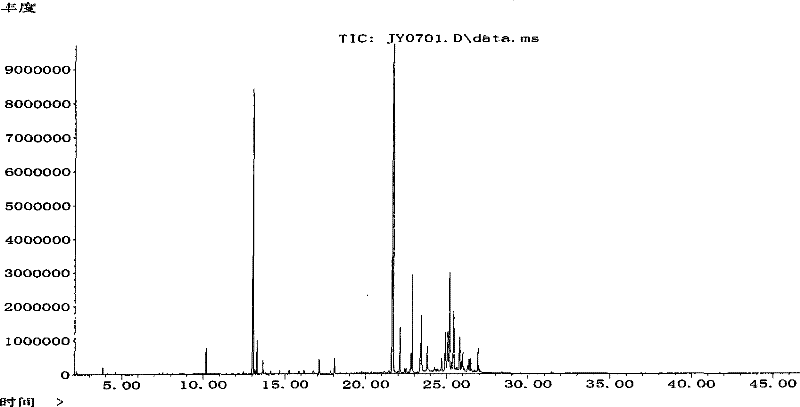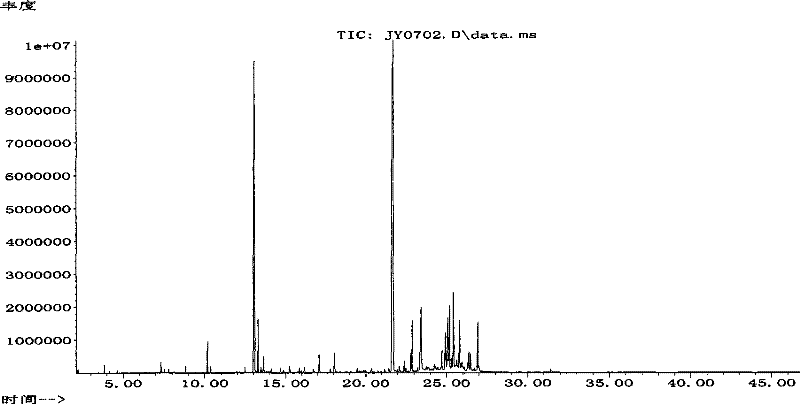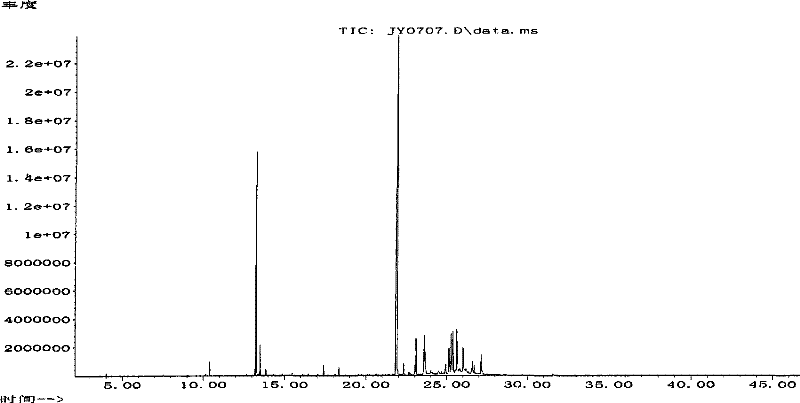Method for measuring fragrance quality of tobacco and products thereof
A determination method and aroma substance technology are applied in the field of tobacco quality determination to achieve the effect of simplifying the calculation process
- Summary
- Abstract
- Description
- Claims
- Application Information
AI Technical Summary
Problems solved by technology
Method used
Image
Examples
Embodiment 1
[0025] ——Sample processing process
[0026] After roasting the shredded tobacco at (40±1)°C for 4 hours, crush it with a pulverizer, pass through a 40-mesh sieve, and balance the obtained tobacco powder in a balance box at a temperature of 22°C and a humidity of 60% for 24 hours. 25.0 g of tobacco powder samples were put into a simultaneous distillation and extraction device, and dichloromethane was used as a solvent to continuously and dynamically extract tobacco shreds for 2 hours. After the obtained extract was dried over anhydrous sodium sulfate, it was concentrated to 1.0 mL in a rotary evaporator. Add 50 μl, 0.1mol / L benzyl acetate in absolute ethanol, shake well, and analyze it with Agilent6890N / 5973N GC / MS analyzer.
[0027] Instruments and experimental conditions used:
[0028] Reagents: dichloromethane (AR, Xilong Chemical), anhydrous sodium sulfate (AR, Tianjin Kemiou Company), absolute ethanol (chromatographically pure, Dima Company), benzyl acetate (chromatograph...
Embodiment 2
[0032] - Calculation of compound content
[0033] Calculate the relative content of each substance by formula 1:
[0034] Ce = β × Cr × At Ar - - - ( 1 )
[0035] In the formula, Ce—the relative correction content of the target component; β—the correction coefficient, the value is 7.2; Cr—the content of the internal standard; At—the peak area of the target component; Ar—the peak area of the internal standard.
Embodiment 3
[0037] ——Compilation of KR index
[0038] Bring the value calculated by formula 1 into formula 2, and the obtained value is the KR value
[0039] KR value = product of positive correlation factors / product of negative correlation factors (2)
[0040] Positively correlated factors include: 3-hydroxy-2-butanone, hexanal, bread ketone, furfural, furfuryl alcohol, 2-cyclopentene-1,4-dione, 1-(2-furyl)-ethanone, butane Lactone, Benzaldehyde, 5-Methylfurfural, 6-Methyl-5-Hepten-2-one, Benzyl Alcohol, Linalool, Phenylethyl Ethanol, 2,6-Nadienal, Zanal, 2 -Methoxy-4-vinylphenol, BETA-Damascone, BETA-Dihydrodamascone, Geranylacetone, BETA-Ionone, Dihydroactinolactone, Macrostigmatrienone A, Macrobean 29 substances including trienone B, macrostigmatrienone C, macrostigmatrienone D, 3-oxo-ALPHA-ionol, methyl myristate, and naringone.
[0041] Negative correlators include: pyridine, 3-methyl-2-butenal, phenol, phenylacetaldehyde, 2-methylphenol, 2-methoxy-phenol, indole, solanone, deh...
PUM
 Login to View More
Login to View More Abstract
Description
Claims
Application Information
 Login to View More
Login to View More - R&D
- Intellectual Property
- Life Sciences
- Materials
- Tech Scout
- Unparalleled Data Quality
- Higher Quality Content
- 60% Fewer Hallucinations
Browse by: Latest US Patents, China's latest patents, Technical Efficacy Thesaurus, Application Domain, Technology Topic, Popular Technical Reports.
© 2025 PatSnap. All rights reserved.Legal|Privacy policy|Modern Slavery Act Transparency Statement|Sitemap|About US| Contact US: help@patsnap.com



